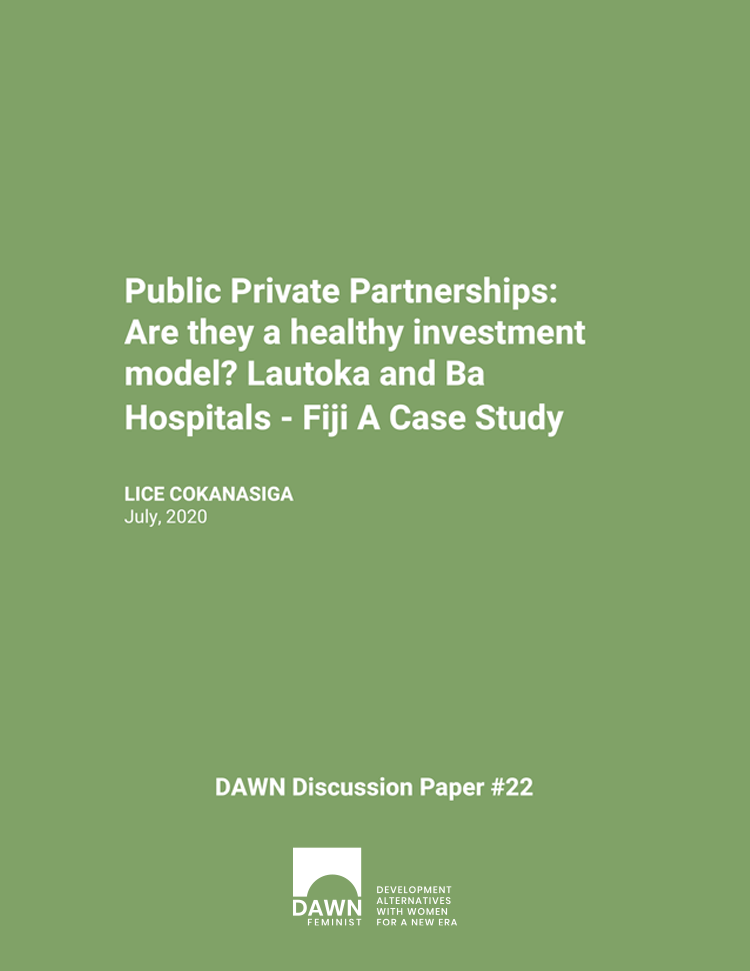Introduction | About the project
In recent decades, large infrastructure projects such as ports, roads and public services including health have been financed through public private partnerships (PPPs). States are pressured to implement fiscal reforms to support the emergence of PPPs as a means of choice for development projects and channel investment finance, thereby locking in State debt. PPPs have been touted as the investment model that will help in developing and upgrading infrastructure to improve effectiveness of public services along with up- skilling human resources if the business environment is right. PPPs are a type of contract under which private companies build and operate public services and infrastructure but much of the financial risk remains with the public body concerned.
Two hospitals in Fiji will undergo a change in healthcare operations as they are transformed from a public to a PPP provided service under a concessional agreement. The Lautoka and newly built Ba Subregional Hospital will provide healthcare to 337, 041 people in the Western Division (Bureau of Statistics, 2018), which is a quarter of Fiji’s population. The Lautoka Hospital will be extended with an additional wing of 305 beds.
This case study and report is part of the Development Alternatives with Women for a New Era (DAWN) series of case studies to contribute with evidence-based analysis to support and expand the feminist critique to Public Private Partnerships (DAWN).
This paper develops a case study analysis of a Public Private Partnership in Fiji’s health sector that attempts to bring together both relevant evidence to study the gender and human rights consequences of PPPs, as well as critical elements for strengthening a feminist approach to PPPs.
Scope
This research project examines:
- The benefits and disadvantages of PPP financing;
- How PPPs fit into the economic strategy of the country;
- The PPP regulatory and legal framework;
- The main actors involved in this PPP case study;
- The gender and human rights implications and impacts of this PPP case study;
- Transparency and accountability concerns; and
- Experiences of resistance

